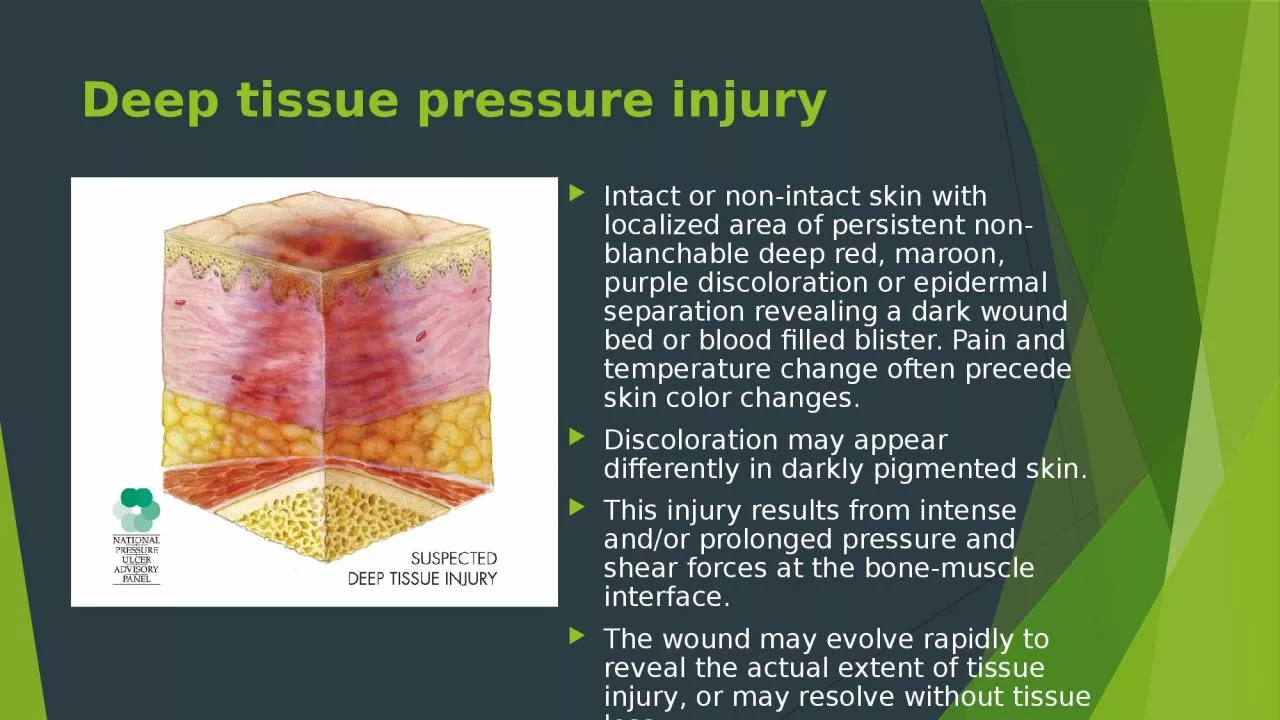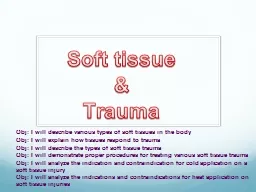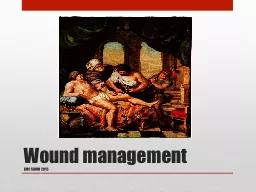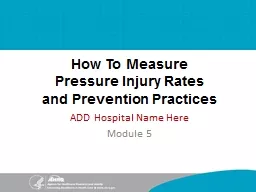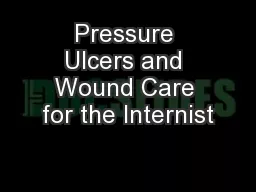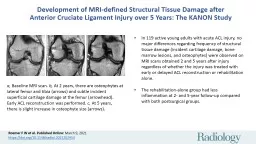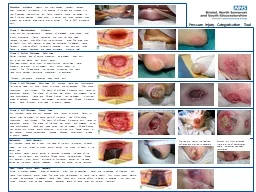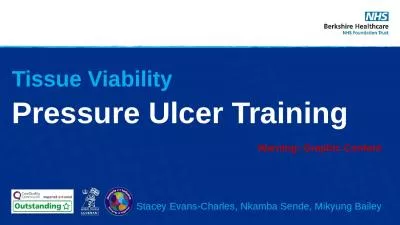PPT-Deep tissue pressure injury
Author : sophia | Published Date : 2024-01-13
Intact or nonintact skin with localized area of persistent nonblanchable deep red maroon purple discoloration or epidermal separation revealing a dark wound bed
Presentation Embed Code
Download Presentation
Download Presentation The PPT/PDF document "Deep tissue pressure injury" is the property of its rightful owner. Permission is granted to download and print the materials on this website for personal, non-commercial use only, and to display it on your personal computer provided you do not modify the materials and that you retain all copyright notices contained in the materials. By downloading content from our website, you accept the terms of this agreement.
Deep tissue pressure injury: Transcript
Download Rules Of Document
"Deep tissue pressure injury"The content belongs to its owner. You may download and print it for personal use, without modification, and keep all copyright notices. By downloading, you agree to these terms.
Related Documents

